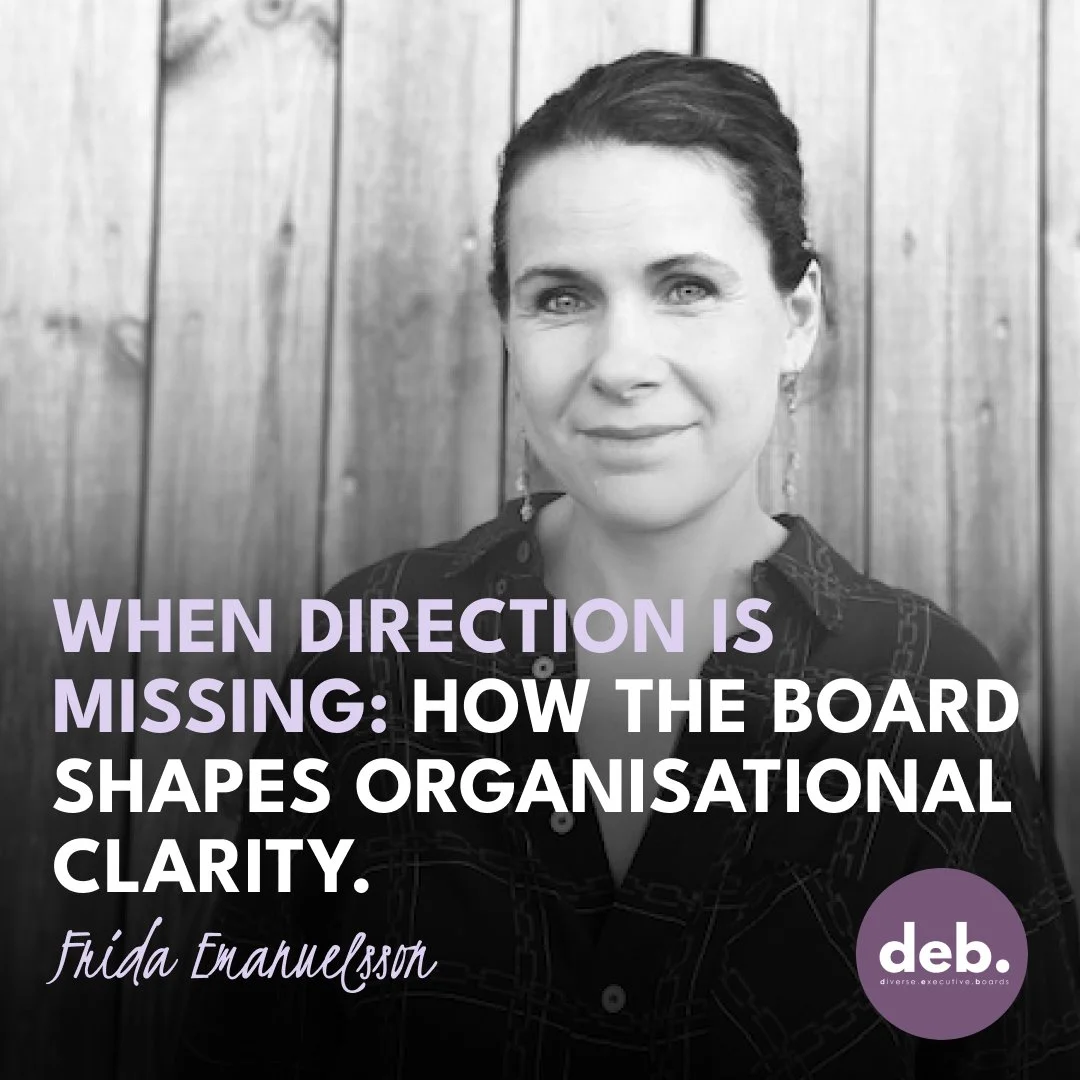When direction is missing: How the Board shapes organisational clarity
In this guest post, a seasoned executive, Frida Emanuelsson, shares her personal insights from years of working closely with management teams and boards. The message is clear: boards that engage with purpose not just protocol, create alignment, momentum, and trust across the organisation. And for that to happen, both sides of the table need to understand each other better.
Written by Frida Emanuelsson:
In my years of working closely with both management teams and boards, I’ve seen first-hand what happens when the board steps back too far. On paper, everything might look fine, KPIs are tracked, meetings are held and budgets approved. But under the surface something critical is missing, direction.
The vacuum of direction
A passive board doesn’t just leave the CEO guessing, it leaves the entire organisation vulnerable. Without clear expectations or strategic input, even the most competent leadership teams can begin to drift.
People want to do the right thing. But without a strong compass, they don’t always know what that is.
I’ve been in leadership teams where we’ve had to “fill in the blanks” ourselves, interpreting what we think the board wants, or trying to align based on outdated goals. It creates uncertainty. Decisions slow down and communication becomes unclear. Priorities start to compete instead of complementing each other.
How the organisation feels it
This isn’t just a leadership issue, it’s cultural.
When a board is disengaged:
The CEO may feel unsupported, overly scrutinised or sometimes both.
The leadership team loses its strategic foothold and becomes reactive instead of proactive.
Teams lower in the organisation pick up on the uncertainty, and it impacts everything from morale to performance.
And worst of all, unnecessary tensions and conflicts arise not because people are misaligned, but because no one has been given a clear frame to align within.
Strong collaboration creates stability
What I’ve also seen is how powerful the relationship between a board and the executive team can be when it works well. It’s not about control, but about collaboration.
Leadership teams don’t need micromanagement. But they do need a board that cares. The most effective boards don’t just show up for quarterly reports. They engage in ongoing dialogue, set the direction, and act as a sounding board for the executive team. One valuable tool is joint strategy offsites, where the board and leadership team spend time together, away from the day-to-day, to align on long-term goals and challenges.
When done well:
The leadership team feels seen and supported.
The board gains real insight into the organisation’s operational reality.
And perhaps most importantly, the rest of the organisation can sense that unity, which fosters clarity, stability and momentum.
Board training matters
That’s why I also believe that board training isn’t just for future or current board members. It’s just as valuable for those sitting in executive roles.
Understanding how boards think and how governance works helps executive leaders:
Frame their communication more strategically,
Anticipate the board’s expectations,
And build trust in both directions.
A programme like deb.’s board training equips you with exactly that: the language, mindset, and perspective to strengthen the bridge between board and management. And that bridge is where so much of an organisation’s success is built or lost.
Boards are not just for governance. They’re for guidance. And when they engage meaningfully, not just formally, they unlock potential far beyond the boardroom.

